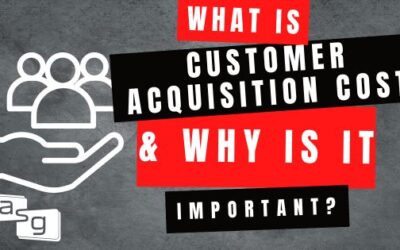Nurturing a Healthy Sales Organization for Long-Term Success
Sales is hard. I say it all the time. In particular, running, leading and building sales teams is hard. But, just because it’s hard doesn’t mean we have to struggle. To establish a healthy sales organization that thrives amidst the complexities of the market, you must recognize the five key factors that directly impact your sales targets. As a sales leader, if you are diligent in understand these five areas; people, process, strategy, product and the market you’re doing OK.
Too often we get caught up in too many things that don’t make a difference. Or, if we are focused on the right things, we’re in too deep. We’re too close to the day-to-day issues and challenges that we don’t pick our heads up and evaluate things from the big picture. Getting a grip on your sales team requires constant analysis and review of the critical areas that affect sales; people, process, strategy, market and product.
Salespeople: The Vital Pillar
The first and most important factor for building a healthy sales organization is the people. If the right people aren’t in place or the right people aren’t performing, you’re dead in the water. I believe this is the most poorly managed element of sales organization success. In my 15 years I can count on a single hand the number of sales organizations that had a sales team review process that mapped to the required hard and soft skills to be successful in that companies particular selling role. Every organization has performance reviews. Some organizations have stack rankings, but few sales organizations are good at constantly evaluating the team down to the individual player roles.
Come up with a way to measure the overall and individual quality of your sales team. Know where it is weak, and where it is strong. It’s as important to know the collective value of the team is it is to know about the individuals.
Sales Processes
Execution is really what process is all about. Process is HOW we go about executing. It’s the systems we put in place to get the desired out comes. I talked about creating a people process earlier. If you want to get a good feel for how well your organization is doing, take a look at your processes. Are they getting the desired results?
I almost NEVER have a EVP Sales, CEO, VP Sales say to me, we don’t have a pipeline review process, we don’t have a coaching process, we don’t have a sales process, everyone has those things, it’s how they execute them that comes into question. It’s not enough to have the processes, they have to be effective and help in achieving the desired results. You may have all the processes in place, making sure they are working however, is where the win is.
Evaluate all your sales processes for effectiveness. Is the commission plan the right plan? Is the people process the right people process? Is the account planning process yielding the results you’re looking for? Is there a sales strategy and planning process in place and does it work? Does the hiring process deliver A players? Constant evaluation and assessment of underlying processes or execution strategies is critical to success. A sales team can’t win without the right processes driving it.
Sales Strategy
This is all you my friend. The sales go-to-market strategy is all about sales leadership. Your strategy is what differentiates you from other sales leaders who might sit in the same position. One sales leader may go right, while another goes left. Sales strategy describes how we leverage all the resources at our disposal. Sales strategy creation is tough. It requires tremendous command of the selling environment, the resources available, the competition, the tools, and more. If that’s not enough, like a hurricane, an environment can change instantly rendering a sales strategy useless in no time.
Constantly evaluating and adapting the sales strategy is vital for maintaining a healthy sales organization. It’s not enough to set it and forget it. The underlying assumptions need to be validated. Market conditions and variables need to be monitored for changes. People resources need to be assessed for appropriate deployment. Data needs to be collected to identify new opportunities and/or avoid pitfalls. Sales strategy is all about dynamic execution. Checking to determine if the current strategy is still the right strategy is one way to make sure the sales organization is heading in the right direction.

The G.S.I.T. is the best tool available to layout an effective plan on making your goals by the end of the year.
The Market
Ah, the market. This one is a bitch. Why? Because all we can do it react to it. We can’t change the market. We can’t make it do what we want, but it can bury us if we’re not careful. When it comes to the market there are two keys, 1) know where it is going, 2) know the best way to respond to it.
The market includes competition, the economy, alternative solutions, government mandates/laws, etc. This is where sales strategy plays a big role. If the market is shrinking, how are you going to capture new business or more importantly protect your base? If it’s growing, how are you going to capture more than your competition? Are new solutions coming on the market? Is the market shifting to new technology, new solutions etc? What problems does your company and product(s) solve and what is the market’s response to them, today and tomorrow?
Any sales leader that doesn’t have an HONEST, reality based answer to this is in deep shit. It’s easy to assume. It’s easy to stay focused internally on the things we can control, but without a key eye on shifts and changes in the market, the rest just won’t matter. We can’t control the market, but we can certainly control how we respond to it. Understanding and responding to the market is another essential in creating a healthy sales organization.
To wrap this up, here is another way of looking at. If the marketing is growing by 30% and you’re growing by 8%, how would you say your sales team is doing? Conversely, if the market is shrinking by 25% and your down 5%, how would you assess the success of your sales team?
The market holds a lot of information.
The Product
If your numbers are down. If the team is struggling, another area of concern is product. I know, it’s sacrilege to blame product for poor sales, but I’ve gone on the record before on this. Ensuring a healthy sales organization involves recognizing the importance of the product. Poor product is ABSOLUTELY a valid reason for poor sales. At the end of the day, it’s the product customers are buying and if it doesn’t meet their needs, if it doesn’t solve their problems, sales is screwed. Customers could care less about its nifty features or its cool benefits.
The product must solve real problems, for real customers, in a real business world and the customer gets to decide how big the problem is, not sales, not product, not marketing, not the executives.
Build a tight relationship with the head of product and the product team. Create a joint product review committee to continually evaluate the strength of the product and it’s market demand. Is the product getting stale? Does it still compete well? Is the customer problem it was designed to solve still a problem? Does the value still warrant the current price?
It’s sales job to sell. However, if the product is dying, it will put unnecessary pressure on the team. Get out ahead of stale products. Work with your product team to ensure your products and services are not dead weight having to be dragged into the market. Make sure they are shiny, pretty objects customers are demanding.
Do You Have a Healthy Sales Organization?
There are a lot of critical things sales leaders need to focus on; pipeline, account management, new business development, channel development, margin growth, revenue growth, average revenue per user/deal, lead generation, etc. But in the end, if revenue is down, the problem can and will be found in any or all of these 5 –people, process, strategy, market, product.
Everything stems from these critical components. If you have the wrong people, you’re screwed. If you don’t have the right execution processes, you’re screwed. If you’re executing the wrong strategy, you’re dead in the water. If the market has turned and you don’t know it, the bottom will fall out. If your product is stale, sales will be too.
There it is, so here is the million dollar question(s):
Do you have a process that supports the evaluation, grading and assessment of these key factors?
Quick, how would you rate the market right now? How would you support your ranking?
Quick, how would you rate your sales team right now? How would you support that ranking?
If you’re like most sales organizations, you can’t. Don’t beat yourself up, most sales organizations can’t and don’t measure these things. Imagine if each quarter or bi-annually you had a dashboard that told you how you were doing in each of these categories. Imagine if you knew where you scored low and where you scored high. How would that effect what you focused on?
Go find out? Go grade your sales organization across these dimensions. It will quickly tell you where your problems are, then you can go fix em.



0 Comments